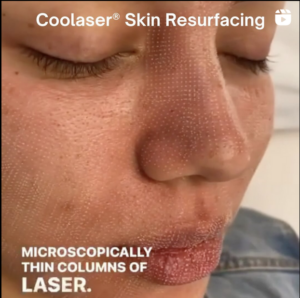Laser skin resurfacing is well known for its ability to rejuvenate the skin, reducing wrinkles and imperfections. However, it is important to consider the risk of scarring that accompanies these results. In this article, we explore laser resurfacing, shedding light on the factors that influence scarring steps to minimize this risk and distinguishing between discoloration and permanent scarring. As we navigate through this topic, our goal is to provide clarity and knowledge so individuals can make choices about their skin’s health and beauty.
How does skin resurfacing work?
Skin resurfacing involves removing the layers of the skin to encourage the growth of healthier skin. Various techniques such as lasers, chemical peels, or dermabrasion, are utilized to exfoliate or eliminate damaged or aging skin. This process stimulates collagen production, leading to skin texture, reduced wrinkles, and a youthful appearance. The specific method employed may vary depending on the concerns being addressed and desired outcomes at Epione.
What is the typical healing time for laser skin resurfacing?
The recovery time for laser skin resurfacing can vary depending on the laser used and the depth of the treatment. Generally, the initial healing phase characterized by redness and swelling can last around 1 to 2 weeks. However, complete healing and the fading of any remaining pinkness or discoloration may take weeks to a month. It is crucial to follow the treatment instructions provided by your practitioner to ensure optimal healing and achieve desired results.

What are the chances of scarring from laser skin resurfacing?
The likelihood of scarring resulting from laser skin resurfacing can significantly vary based on factors such as the type of laser used, individual skin type, and the expertise of the practitioner performing the procedure. In the hands of a good practitioner and with the correct post-care, the risk of scarring is generally reduced.
Is it possible to treat or manage scarring if it occurs after laser skin resurfacing?
Scarring that develops after undergoing laser skin resurfacing can often be effectively addressed through cosmetic interventions. However, success may depend on factors like the type and severity of scarring, it is advisable to consult with a dermatologist or specialist for guidance.
Are there any preparations or aftercare routines that can help prevent scarring before and after laser skin resurfacing?
Certainly, there are steps you can take before and after laser skin resurfacing to minimize the chances of scarring. These measures usually involve avoiding sun exposure, following recommendations, and adhering to the guidance provided by your practitioner.
In conclusion, having an understanding of the factors that affect scarring risk in laser resurfacing allows individuals to make informed decisions about this transformative procedure. By familiarizing themselves with measures, exploring treatment options, and being aware of what influences scarring, individuals can confidently embark on their journey toward achieving healthier and more radiant skin. This knowledge empowers them to make choices that prioritize their skin’s health and beauty while minimizing the risk of scarring. Contact us today to learn more.